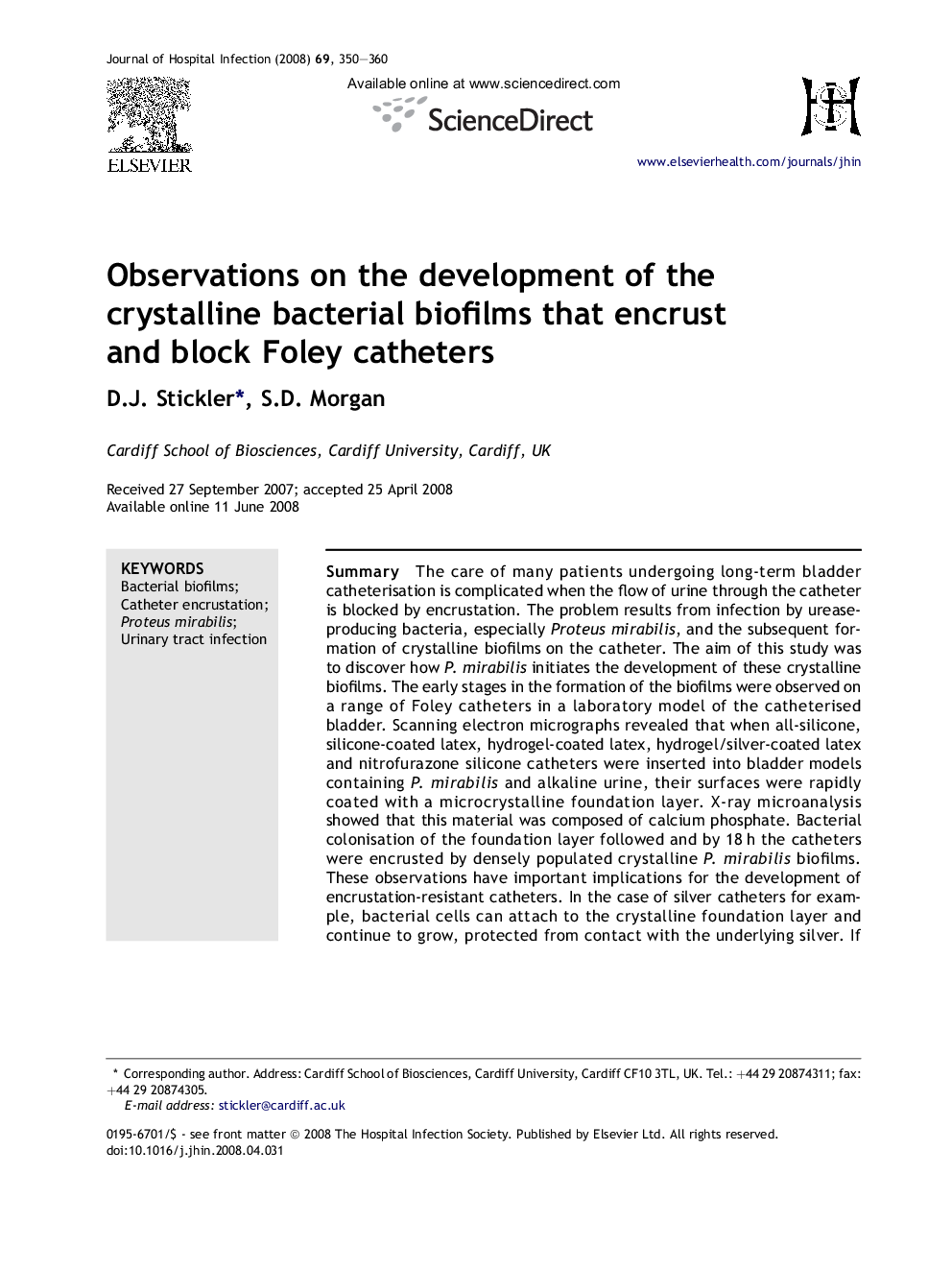| کد مقاله | کد نشریه | سال انتشار | مقاله انگلیسی | نسخه تمام متن |
|---|---|---|---|---|
| 3373338 | 1219291 | 2008 | 11 صفحه PDF | دانلود رایگان |

SummaryThe care of many patients undergoing long-term bladder catheterisation is complicated when the flow of urine through the catheter is blocked by encrustation. The problem results from infection by urease-producing bacteria, especially Proteus mirabilis, and the subsequent formation of crystalline biofilms on the catheter. The aim of this study was to discover how P. mirabilis initiates the development of these crystalline biofilms. The early stages in the formation of the biofilms were observed on a range of Foley catheters in a laboratory model of the catheterised bladder. Scanning electron micrographs revealed that when all-silicone, silicone-coated latex, hydrogel-coated latex, hydrogel/silver-coated latex and nitrofurazone silicone catheters were inserted into bladder models containing P. mirabilis and alkaline urine, their surfaces were rapidly coated with a microcrystalline foundation layer. X-ray microanalysis showed that this material was composed of calcium phosphate. Bacterial colonisation of the foundation layer followed and by 18 h the catheters were encrusted by densely populated crystalline P. mirabilis biofilms. These observations have important implications for the development of encrustation-resistant catheters. In the case of silver catheters for example, bacterial cells can attach to the crystalline foundation layer and continue to grow, protected from contact with the underlying silver. If antimicrobials are to be incorporated into catheters to prevent encrustation, it is important that they diffuse into the urine and prevent the rise in pH that triggers crystal formation.
Journal: Journal of Hospital Infection - Volume 69, Issue 4, August 2008, Pages 350–360